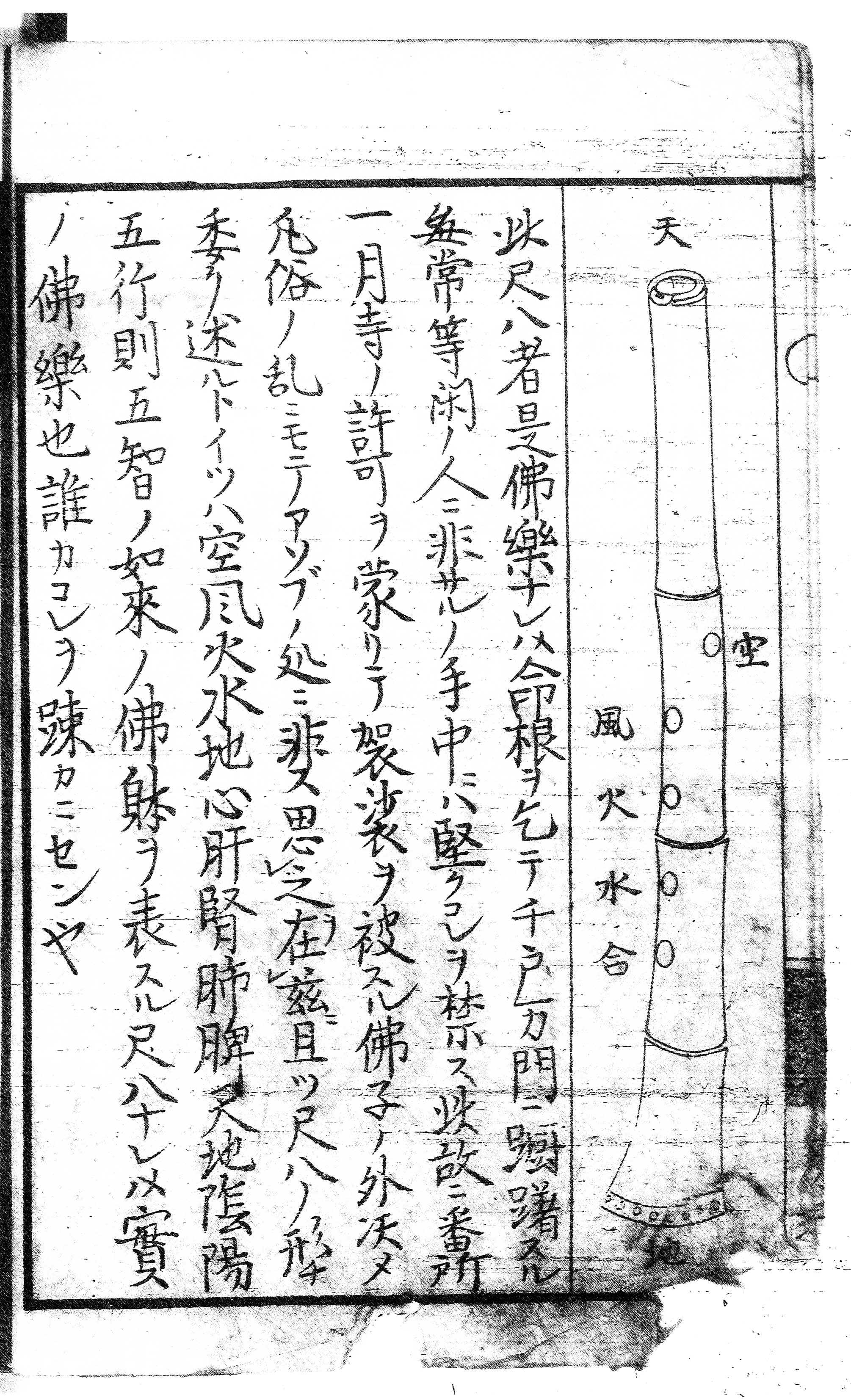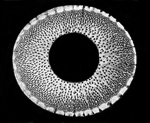|
1769: Oka Shū'eki and Shakuhachi Ideology
- Introducing a Remarkable Rare 'Komusō' Credo
OKA SHŪ'EKI's SHAKUHACHI TSŪZOKU-SHŪ,
"A Popular Shakuhachi Collection", the introduction on page 6.

Page 6 in Oka Shū'eki's "A Popular Shakuhachi Collection", 1769.
It has been virtually fruitless to search the surviving 'Shakuhachi'- and 'Komusō'-related Edo Period documents and texts for
detailed and comprehensive references to genuine Buddhist ideology.
That search of Yours Truly's began more than 40 years ago on the background of
now more than 50 years of Japanology studies - and, before that:
Sinology studies since 1968 including academic degrees in both those very broad fields of Eastasian cultures research.
The Kyotaku denki mentions the term 'Zen' only once! That document is in no way any Buddhist "credo", at all, but
a completely fabricated list of invented 'Shakuhachi' players first in China, then in Japan, since the 9th century,
who supposedly transmitted some never existing 'Shakuhachi' bamboo flute recitals up until the mid-17th century.
The underlying ideology observed in that "account" is first of all "Neo-Confucianism on steroids", not Buddhism:
Ancestry, continuity, and master-disciple relationship matters more than anything else!
Acc. to Oka Shū'eki statement on page 6, he appears to have been connected with the Ichigetsu Temple in present Machida City, east of Edo, present Tokyo.
Therefore, very possibly: a 'Komusō', himself.
The text on page 6 does not mention a word about 'Zen', 'Zazen', 'Rinzai', nor anything about "meditation",
nor 'Komusō', 'Fuke-shū' or 'Honkyoku', neither!
But, in the very first sentence, the 'Shakuhachi' is referred to as "Buddha music": 'Hotoke-gaku' - however not 'hōki', "Dharma instrument",
as some might have expected! Or, hoped for?
The cosmic, Ultimate Reality importance and significance is exemplified with
the likening of the total of seven apertures of the 18th century 'Shakuhachi' with
"Heaven and Earth", and the "Five Elements" of the World view back then, namely
"Sky/The Void", "Wind", "Fire", "Water", and "Earth".
In the drawing, however, the latter, "Earth", given in the text in column 5 from the right, is replaced with "Whole(ness)", "Together(ness)", "Unity",
for the fourth fingerhole from the top of the flute front, which is quite noteworthy, in fact.
However, the two finalizing sentences in Oka's "shakuhachi credo" are indeed the most telling of his dedication as of 1769 ...
「。。。*陰陽,五行則ち五智ノ如來ノ佛躰ヲ
表スル尺八ナレバ實ノ佛楽也。
誰カコレヲ踈カニセンャ。」
Reading in Japanese:
'In yō, gogyō sunawachi gochi no nyorai no butsu tai wo
arawasuru shakuhachi nareba jitsu no butsu gaku nari.
Dareka kore wo soshō kanisen ya?'
Preliminary translation/interpreation; not an easy one, though - somewhar cryptic syntax, indeed :-) :
"Yin (?) & Yang, the Five Elements, and the Five Wisdoms -
the Perfection of the Buddha expressed by the Shakuhachi
is true Buddhist Music.
Who can possibly neglect that?"
Or rather, maybe:
"The shakuhachi represents Yin & Yang, the Five Elements, and the Body of the Five Wisdom's Buddha,
so it is true Buddhist music.
Who would dare to be negligent about that?"
Still, might those words be only a proclamation of commonly shared stereotype concepts and opinions of the time?
*) The first 'kanji' in the shown Japanese Oka Shū'eki yexy is non-standard, not to be found in the modern dictionaries, so far.
More details and interpretations may follow when all the 'kanji' have been satisfyingly deciphered and the entire text reliably interpreted.
|
|

